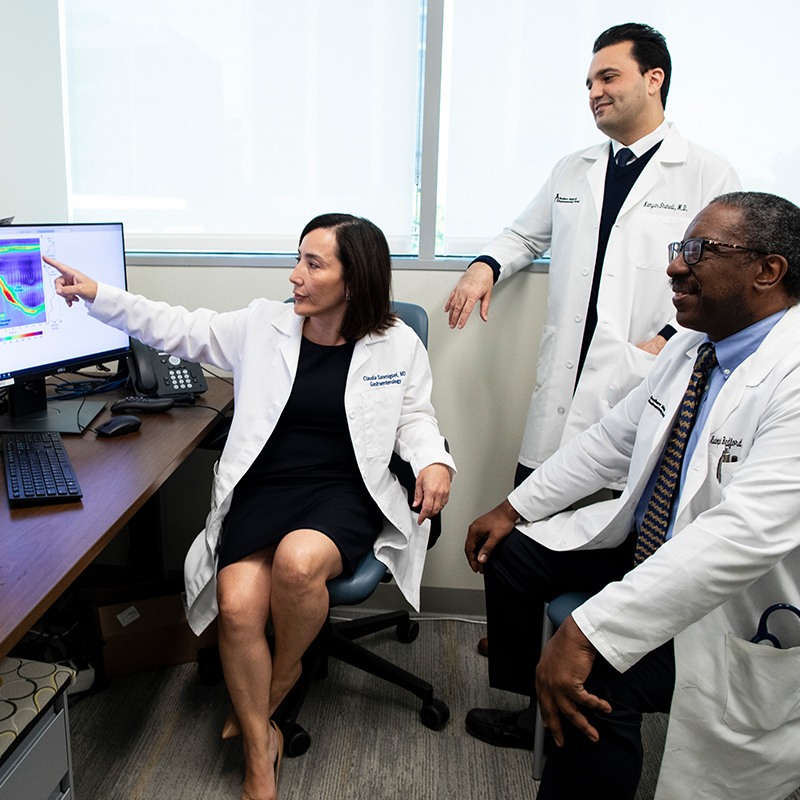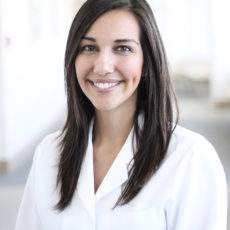Reconstructive Surgery

Overview
Reconstructive Surgery
Reconstructive surgery after skin cancer is a common, highly-specialized type of surgery performed by dermatologic and plastic surgeons. If you think you will need reconstructive surgery after skin cancer removal, speak to your reconstructive surgeon before the cancer removal to strategize the best way to proceed.
Reconstructive surgery usually occurs the same day as the skin cancer removal surgery or the day after. Usually, it only requires one surgery, but sometimes it may require more, depending on the wound’s location, size and depth. Your surgeon may be able to perform reconstruction immediately after removing your lesion, or they may refer you to a plastic surgeon.
The type of reconstructive surgery you have will depend on the wound’s location, size and depth. Types of reconstruction surgery include:
Linear Closure
The surgeon closes the wound in a straight line. Linear closure is the most straightforward method.
Free-Tissue Transfer
The surgeon uses skin from a distant part of the body, sometimes with fat and muscle.
Primary Repair of Defect
The surgeon repairs the wound with sutures after removing a small lesion. Sometimes the surgeon will change the shape of the wound to create a more natural look by hiding scars in the natural lines to minimize visibility.
Skin Graft
If your surgeon decides to do a skin graft, she or he will take skin from another part of your body. Your surgeon will cut the skin into the same shape as the wound and suture it into place. When the surgery is on your face, your surgeon will usually do a full-thickness graft because partial-thickness grafts can cause color variations. Even so, the skin may not be a perfect match. Skin grafting is a good option for shallow cancer lesions.
Local Flap Reconstruction
The surgeon uses the skin adjacent to the tumor’s area. The surgeon usually enlarges the incision to create a flap large enough to cover the wound. This is the preferred method for surgery on the face. Local flap reconstruction offers the best match in skin color and texture.
Major Nasal Reconstruction
The surgeon takes skin and blood vessels from the forehead or other body parts. This procedure combines cartilage grafting and lining reconstruction to restore the appearance and functionality of the nose. The nose is particularly challenging because it is crucial for breathing, and its prominence on the face requires particular attention to aesthetics.
Bone/cartilage grafts
The surgeon takes bone or cartilage from the skull and forms it into the required shape.
Most insurance companies consider reconstructive surgery medically necessary and may cover many costs.
Why Reconstructive Surgery?
Because skin cancers usually occur on exposed areas of the body, such as the face, head, neck, hands and arms, most people are concerned with how they will look after skin cancer removal surgery. Your surgeon can do reconstructive surgery to restore your appearance and the functionality of the affected area. Besides improving the appearance, reconstructive surgery can reduce discomfort from skin tightness.
Risks
Reconstructive Surgery Potential Risks and Complications
Reconstructive surgery is a standard procedure that rarely causes serious complications. However, as with all surgeries, there are some risks, such as:
- Itching
- Bruising
- Scarring
- Bleeding
- Infection
- Slow healing
- Shooting pain
- Nerve damage
- Pain and discomfort
- Reaction to the anesthetic

Prep
Preparing for Reconstructive Surgery
Your doctor will give you instructions explaining what to do to prepare for your reconstructive surgery. Be sure to tell your doctor about any medications you are currently taking. It is also a good idea to:
- Dress comfortably
- Not wear jewelry
- Not wear makeup
- Plan an appropriate amount of recovery time
What to Expect
What to Expect
Reconstructive surgery is often a one-day outpatient surgery with a local anesthetic. However, that can vary depending upon the complexity of your procedure, and you may need more than one surgery.
During the Procedure
The nurse will clean and prep the surgical area. The procedures vary depending on the size, depth and location of the wound, but in general, your doctor or nurse will administer anesthesia using a local or general anesthetic or IV sedation (twilight sleep), so you won’t feel pain during the procedure. If you need a skin graft, your surgeon will harvest any required tissue from a donor site. The area they choose will match the skin around the wound as closely as possible.
After the Procedure
Your surgeon will dress the wound and provide you with instructions on how to care for it. You will schedule a follow-up appointment with your doctor or surgeon to ensure the surgery site is healing correctly. The doctor may recommend that you use acetaminophen for pain and may prescribe antibiotics to prevent infection.
Follow-Up
Your doctor will schedule follow-up appointments as needed. However, people who have had skin cancer once have a higher risk of redeveloping skin cancer. It is essential to schedule regular checkups with your dermatologist at least once a year, or more often if your surgeon, doctor or dermatologist feels it is appropriate.
Specialists
